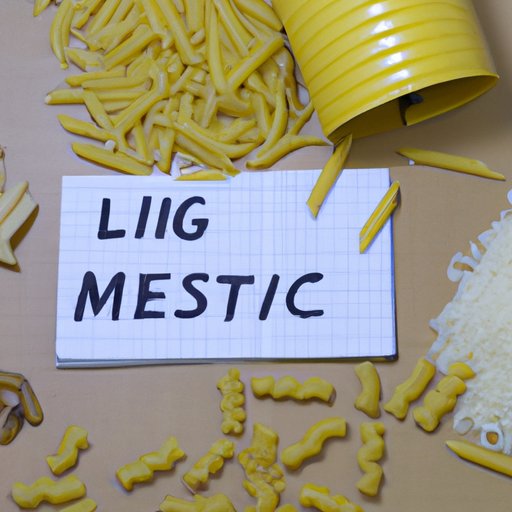Introduction
Pasta and rice are two of the most popular grains consumed around the world. Many people debate which is healthier, but there is no definitive answer. This article will compare the health benefits of both grains to explore whether one is more nutritious than the other.
Overview of the Debate: Is pasta healthier than rice?
The debate around whether pasta or rice is healthier has been ongoing for decades. Both grains have similar nutritional profiles, with both being sources of carbohydrates, protein, and fiber. However, they differ in terms of their glycemic index and the way they are cooked. This can influence how healthy each grain is and how it affects weight loss and diabetes management.
Purpose of the Article
The purpose of this article is to compare the health benefits of pasta and rice. It will look at their nutritional qualities, carbohydrate content, glycemic index, and potential risks associated with eating them. It will also examine the impact of cooking methods on the healthiness of each grain.
Nutritionist Perspective on the Health Benefits of Pasta vs Rice
In order to determine which grain is healthier, it’s important to understand the nutritional qualities of each. According to nutritionist Dr. Lisa Young, “Both pasta and rice are complex carbohydrates, meaning they provide energy and essential vitamins and minerals.”

Carbohydrate Content of Pasta and Rice
The carbohydrate content of pasta and rice is similar. One cup of cooked white rice contains 45 grams of carbohydrate, while one cup of cooked white pasta contains 43 grams of carbohydrate. Despite the slight difference in carb content, both grains provide a similar amount of energy.
Which Grain is Better for Weight Loss?
When it comes to weight loss, the type of grain you choose is important. While both pasta and rice contain carbohydrates, the glycemic index of each grain can affect how quickly your body absorbs the carbs. According to registered dietitian Abby Langer, “The glycemic index is a measure of how quickly a food increases your blood sugar levels. Foods with a higher glycemic index can cause a rapid rise in blood sugar, which can lead to weight gain.”
The Impact of Cooking Method on the Healthiness of Pasta and Rice
The way that pasta and rice are cooked can also affect their healthiness. For example, if pasta is cooked al dente (firm to the bite) it can have a lower glycemic index than if it is overcooked. The same is true for rice, as overcooked rice can have a higher glycemic index than firmer rice.

Examining the Glycemic Index of Different Types of Pasta and Rice
The glycemic index of different types of pasta and rice can vary. White rice has a higher glycemic index than brown rice, so it can cause a more rapid rise in blood sugar. Whole wheat pasta also has a lower glycemic index than white pasta, so it can be a better choice for weight loss.

Pros and Cons of Eating Pasta and Rice for Diabetes Management
For those managing diabetes, it is important to consider the pros and cons of eating pasta and rice. On the plus side, both grains provide essential nutrients like B vitamins, iron, and magnesium. They can also help to regulate blood sugar levels. However, it is important to note that some types of pasta and rice may have a higher glycemic index, which can cause spikes in blood sugar levels.
Conclusion
In conclusion, both pasta and rice offer nutritional benefits and can be part of a healthy diet. However, the glycemic index of each grain, as well as the way they are cooked, can affect their overall healthiness. For those looking to lose weight or manage diabetes, it is important to choose whole grain varieties and to cook them al dente.
Summary of Findings
This article compared the health benefits of pasta and rice, exploring the impact of their carbohydrate content, glycemic index and cooking method on weight loss and diabetes management. It found that both grains offer nutritional benefits, but the type of grain and cooking method can affect their healthiness. Whole grain varieties and cooking al dente can help to reduce the glycemic index of each grain.
Final Thoughts on Pasta vs Rice
When deciding which grain is healthier, it is important to consider the nutritional qualities of each, as well as their glycemic index and cooking method. Both pasta and rice can be part of a healthy diet, but it is important to choose whole grain varieties and cook them al dente to ensure their health benefits.
(Note: Is this article not meeting your expectations? Do you have knowledge or insights to share? Unlock new opportunities and expand your reach by joining our authors team. Click Registration to join us and share your expertise with our readers.)
